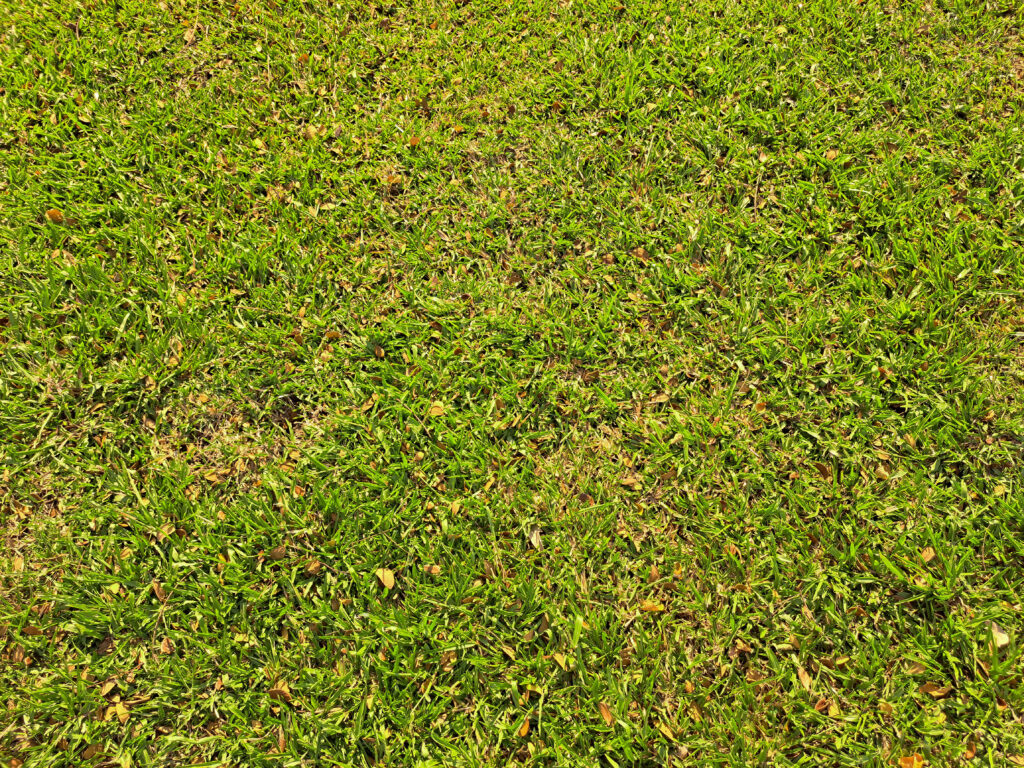What You’ll Learn
- Choose the Right Grass for Your Climate: Identify the best grass types (St. Augustine, Bermuda, Zoysia, Centipede, and Bahia) that thrive in South Florida’s hot and humid conditions.
- Match Grass to Light Conditions: Select the appropriate grass for shaded areas (St. Augustine) and sunny spots (Bermuda) to ensure optimal growth.
- Adapt Your Maintenance Routine: Understand the maintenance needs of each grass type, with low-maintenance options like Zoysia and Centipede and higher-maintenance options like Bermuda.
- Select Grass for Specific Uses: Determine the best grass for high-traffic areas (Bermuda) and large landscapes or erosion control (Bahia).
- Implement Effective Lawn Care: Learn how to regularly water, fertilize, mow, and aerate your lawn based on the specific grass type to maintain a healthy and lush lawn.
Best grass types for South Florida lawns
When selecting the right sod for a South Florida lawn, several key factors must be considered due to the region’s unique climate and soil conditions. The tropical climate, with hot, humid summers and mild winters, favors warm-season grasses such as St. Augustine, Bermuda, Zoysia, Bahia, and Centipede.
Each grass type has specific sunlight requirements: St. Augustine and Zoysia tolerate shade well, while Bermuda and Bahia thrive in full sun. Additionally, soil type plays a crucial role, with each grass having particular preferences for soil pH and drainage.
Here in Palm Beach County, watering and maintenance needs are also critical considerations. St. Augustine grass requires frequent watering and regular fertilization, making it higher maintenance, while Zoysia and Bahia grasses are more drought-tolerant and require less upkeep.
Traffic tolerance varies, with Bermuda and Zoysia grasses being highly durable and suitable for high-traffic areas, whereas Centipede grass is better for low-traffic regions due to its lower wear tolerance.
Pest and disease resistance is another factor, with Bahia grass showing high resistance, while St. Augustine is more susceptible.
Lastly, cost is a practical consideration, with prices per square foot ranging from $0.20 to $1.00 depending on the grass type. Understanding these factors will help ensure a beautiful, resilient lawn.
Considering these aspects—climate suitability, sunlight requirements, soil type, watering and maintenance needs, traffic and wear tolerance, pest and disease resistance, and cost—will guide you in selecting the most appropriate sod variety for your lawn.
Continue reading below to learn more about the different grass types available in South Florida. For more detailed guidance and professional assistance, contact our knowledgable team at 561-941-GROW.
1. St. Augustine Grass

| St. Augustine Grass |
|---|
| Appearance: Dark green, dense, and coarse-textured. |
| Climate Tolerance: Excellent heat and drought tolerance, moderate shade tolerance. |
| Maintenance Needs: Regular watering, fertilizing, and mowing. |
| Best for: Ideal for residential lawns and areas with moderate shade. |
| Pros: Thrives in South Florida’s climate, good shade tolerance, attractive appearance. |
| Cons: Higher water and fertilizer needs, susceptible to pests and diseases. |
2. Bermuda Grass

| Bermuda Grass |
|---|
| Appearance: Fine-textured with a vibrant green color. |
| Climate Tolerance: Highly drought-tolerant, prefers full sun. |
| Maintenance Needs: Requires frequent mowing and moderate watering. |
| Best for: Perfect for golf courses and athletic fields. |
| Pros: Excellent drought tolerance, recovers quickly from damage, suitable for high-traffic areas. |
| Cons: Requires frequent mowing, less shade tolerance, can become invasive. |
3. Zoysia Grass

| Zoysia Grass |
|---|
| Appearance: Medium to fine texture, soft underfoot. |
| Climate Tolerance: Good drought and shade tolerance. |
| Maintenance Needs: Low maintenance, less frequent mowing required. |
| Best for: Suitable for home lawns and commercial landscapes. |
| Pros: Low maintenance, good shade and drought tolerance, attractive texture. |
| Cons: Slow to establish, can be expensive to install. |
4. Bahia Grass

| Bahia Grass |
|---|
| Appearance: Light green, coarse texture, and open growth pattern. |
| Climate Tolerance: Highly drought-tolerant and heat-resistant. |
| Maintenance Needs: Low maintenance, ideal for low-input lawns. |
| Best for: Suitable for utility areas, erosion control, and large landscapes. |
| Pros: Excellent drought tolerance, low maintenance, good for erosion control. |
| Cons: Coarse texture, can become weedy, less visually appealing. |
5. Centipede Grass

| Centipede Grass |
|---|
| Appearance: Light green color with a coarse texture. |
| Climate Tolerance: Tolerates moderate shade and requires less fertilizer. |
| Maintenance Needs: Low maintenance, needs minimal mowing and fertilization. |
| Best for: Great for low-maintenance residential lawns. |
| Pros: Low maintenance, less fertilization required, good shade tolerance. |
| Cons: Not as wear-tolerant, slow growth rate, less cold tolerance. |
Warm Season Grass FAQs
Q: Which grass type is the most drought-tolerant?
A: Bermuda grass is highly drought-tolerant and thrives in full sun, making it an excellent choice for areas with limited rainfall.
Q: What is the best grass for shaded areas?
St. Augustine grass has moderate shade tolerance and is a great choice for partially shaded lawns
Q: How often should I water my lawn?
A: Lawns, especially those with St. Augustine grass, should be watered deeply but infrequently. Typically, watering twice a week is sufficient, depending on weather conditions.
Q: Can I mix different types of grass in my lawn?
A: It’s generally not recommended to mix different grass types because they have different
Q: What is the best grass type for a low-maintenance lawn?
A: Centipede grass and Bahia grass are both excellent choices for low-maintenance lawns due to their minimal fertilization and mowing requirements.
Can’t decide? Give us a call
Give us a call at 561-941-GROW. Our dedicated team at Floridist is passionate about creating beautiful lawns and excited to help Palm Beach County residents. Schedule a consultation with us to receive a personalized estimate and expert guidance on selecting the perfect sod varieties for your unique landscape.
